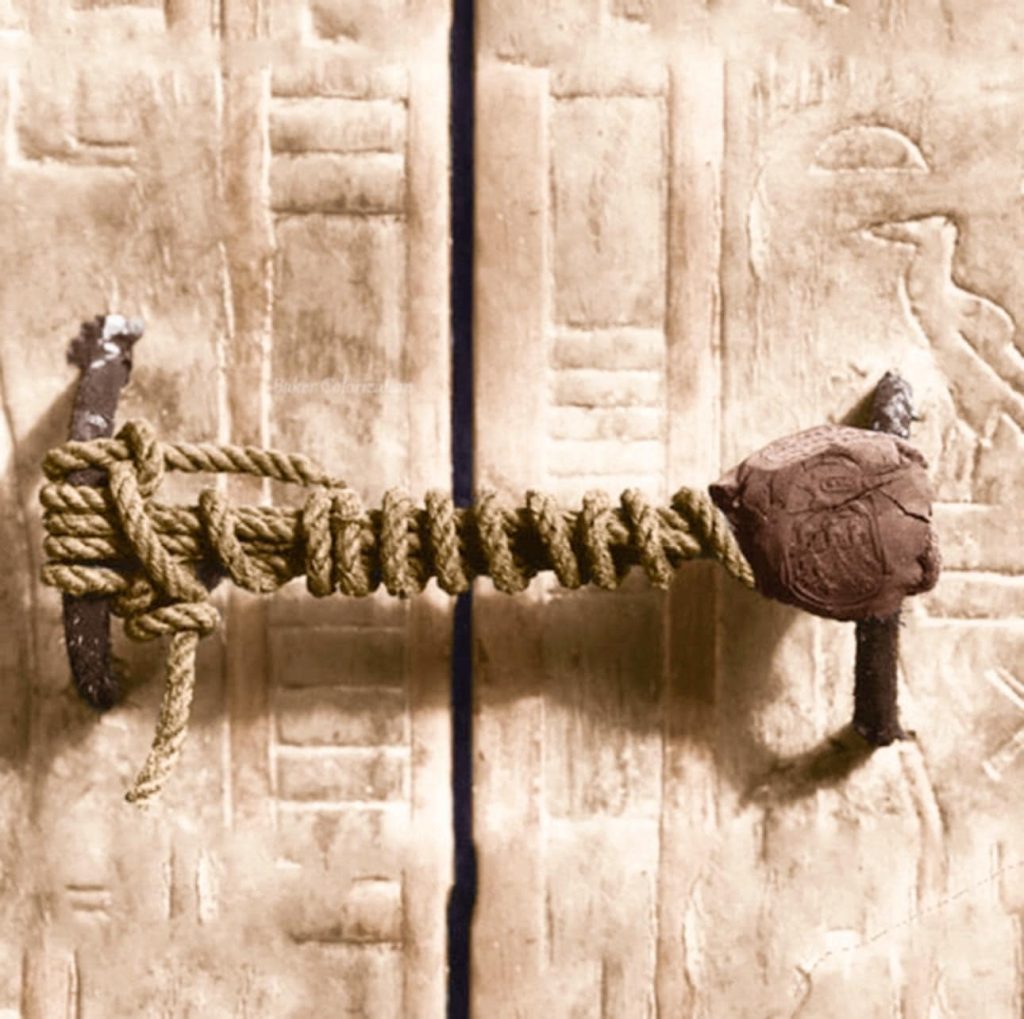In the vast golden sands of Egypt’s famed Valley of the Kings, a chapter of history lay silently beneath the surface, undisturbed for over three millennia. It was 1922, a time when the world was still grappling with the aftermath of the First World War, and in the midst of global uncertainty, a monumental discovery was about to unfold. British archaeologist Howard Carter, after years of tireless excavation and searching, was on the brink of unearthing one of the most significant archaeological finds of all time. What he would soon reveal to the world was a treasure trove of astonishing richness, a glimpse into the life and beliefs of ancient Egypt’s New Kingdom, and a story that continues to captivate the imagination of scholars and the public alike.

At the heart of this discovery was a simple yet profoundly meaningful artifact: a seal. Not just any seal, but one that had stood as a guardian for 3,245 years. This ancient barrier, composed of carefully tied rope and hardened clay, was a powerful representation of the spiritual and cultural values of an advanced civilization. It wasn’t merely intended to deter grave robbers; it was imbued with religious significance, a sacred boundary meant to protect the soul of the deceased as it journeyed into the afterlife. The seal was more than a practical security measure—it was a statement of faith, an emblem of a society deeply committed to the preservation of both body and spirit.
What made this particular seal so extraordinary was its immaculate condition. For a tomb to remain untouched in a region historically plagued by looters was, and remains, nearly unprecedented. The seal bore the royal insignia of Pharaoh Tutankhamun, a young king whose brief reign would be immortalized not through his accomplishments in life, but through the unparalleled preservation of his final resting place. The presence of this insignia was a sign of divine protection, a mark of ownership by the gods as much as by the king himself. It was as if time itself had respected this sacred space, allowing its contents to endure unspoiled.
When Carter and his team finally broke the seal, they stepped into a world frozen in time. Behind the sealed doors lay a collection of over 5,000 artifacts, each one more astonishing than the last. Among them was the now-iconic golden funerary mask of Tutankhamun—a masterpiece of artistry and symbolism that has since become a symbol of ancient Egypt’s grandeur. There were intricately crafted pieces of jewelry, ceremonial chariots, gilded beds, and a vast array of items intended to serve the pharaoh in the afterlife. Each object was not merely decorative but carried spiritual weight, designed to ensure a smooth transition from this world to the next.
However, what these treasures truly offered was something far greater than material wealth—they provided a direct link to the lives, beliefs, and artistic achievements of a civilization that flourished over three thousand years ago. Each artifact revealed insights into the social hierarchy, religious practices, and daily routines of the time. These were not just items of luxury; they were tools, symbols, and expressions of a worldview in which life and death were intricately connected. In ancient Egyptian belief, the afterlife was a continuation of earthly existence, and every detail, from the design of a chair to the placement of amulets, held importance in securing eternal peace.
The unbroken seal stood as a testament to the dedication and skill of those who constructed the tomb and its contents. The priests, artisans, and laborers who contributed to this burial had an unwavering commitment to ensuring their ruler’s legacy endured. Their meticulous craftsmanship and devotion to tradition allowed modern archaeologists a glimpse into the ancient world with an immediacy rarely afforded in other historical contexts. It was as if Tutankhamun himself had reached across time, offering a personal invitation into his world.
Even today, over a century since its discovery, the tomb of Tutankhamun remains a source of inspiration and wonder. It represents not just a milestone in archaeological achievement, but a symbol of cultural pride and continuity for Egypt and the world. The treasures have toured globally, drawing millions of visitors and sparking a renewed interest in ancient history. The enduring allure of this discovery lies not only in its opulence but in its ability to humanize the past. Through these objects, we see the hands of artists, the hopes of a young king, and the spiritual convictions of an entire civilization.
The story of Tutankhamun’s tomb, and the sacred seal that protected it, underscores a larger truth about the human experience. History is not merely a collection of dates and events—it is a narrative of people, of their dreams, beliefs, and endeavors. This tale reminds us of the timeless human quest to be remembered, to leave a mark, and to connect with those who come after. The seal, the treasures, and the tomb itself are more than relics; they are messages from the past, inviting us to explore, to learn, and to marvel at the resilience and creativity of humanity.
In conclusion, the unbroken seal of Tutankhamun is far more than a remarkable archaeological find—it is a profound symbol of preservation, respect, and the enduring power of history. It teaches us that the past, when honored and understood, offers invaluable lessons for the present and future. As we continue to study and reflect upon this extraordinary discovery, we are reminded that the sands of time may conceal great secrets, but they also offer timeless windows into the spirit of human civilization.





